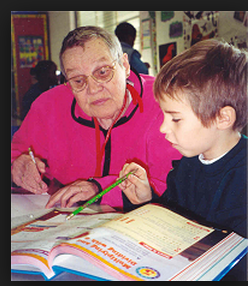Does the quality of a natural mentoring relationship affect the perceived value of school for Latinx students?
Anderson, A.J., Sánchez, B. and McMahon, S.D. (2019), Natural Mentoring, Academic Motivation, and Values Toward Education Among Latinx Adolescents. Am J Community Psychol, 63: 99-109. doi:10.1002/ajcp.12319
Summarized by Jeremy Astesano
Notes of Interest: This short-term longitudinal study examined how the quality of a natural mentoring relationship and the intrinsic motivation of Latinx students would relate to their subjective determination of the economic value of their education (EVE). In a final sample of 256 predominantly low-income students in 9th and 10th grade, these authors found partial support for their hypothesis that mentoring relationship quality was associated with EVE: in 9th grade, but not 10th grade, the overall quality of the mentoring relationship predicted perceived EVE. Interestingly, the authors also report finding that intrinsic motivation was a mechanism through which instrumental relationship quality increased perceived EVE over time, suggesting that students with high intrinsic motivation may have a higher academic interest to begin with, which when facilitated by high instrumental support, lead to higher belief in the economic value of their education.
Introduction (Reprinted from the Abstract)
We examined the roles of relational and instrumental relationship quality with natural mentors and academic intrinsic motivation on Latinx adolescents’ perceived economic values of education. Participants were 256 Latinx youth (M = 15.07 years old; 116 boys, 140 girls) who completed surveys in 9th and 10th grades. Path analyses indicated significant cross-sectional effects in 9th grade such that instrumental quality was associated with more perceived benefits of education, and relational quality was associated with fewer perceived limitations of education. Neither instrumental nor relational quality in 9th grade was associated with either benefits or limitations of education in 10th grade. Instrumental relationship quality in 9th grade, however, did have an indirect effect on perceived benefits of education in 10th grade through intrinsic motivation. Implications for research on natural mentoring with Latinx adolescents are discussed.
Implications
The current study found that mentoring relationship quality and intrinsic motivation played important roles in Latinx adolescents’ perceived EVE. In partial support of our hypotheses, relationship quality with natural mentors was associated with EVE in 9th grade, but not in 10th grade. Intrinsic motivation in 9th grade, however, played an indirect role between instrumental quality in 9th grade and perceived benefits of education in 10th grade. To our knowledge, this is the first study to examine the indirect role of intrinsic motivation in the associations between relationship quality with natural mentors and educational values among Latinx adolescents.
Our findings support prior natural mentoring research, which has demonstrated the positive role of high-quality mentoring relationships on youth academic outcomes (Van Dam et al., 2018). In our study, instrumental quality in 9th grade was associated with more perceived benefits of education in 9th grade, and relational quality in 9th grade was associated with fewer limitations of education in 9th grade. Only partial support for study hypotheses was found, however, such that neither of these associations extended into the 10th grade. It is possible that the presence or nature of mentoring relationships reported in 9th grade changed over time, thus influencing the longitudinal results. Prior research has indicated that natural mentoring relationships do evolve during adolescence (Sanchez, Esparza, Berardi, & Pryce, 2011).In a study of how Latino youths’ natural mentoring relationships change during the transition from high school, it was found that natural mentoring relationships ended due to changes in the social context, the youth’s needs, or the mentor’s availability (Sanchez et al., 2011). In the current study, it is possible that youth may not have reported the same individual as a mentor in 10th grade as they did in 9th grade because those relationships evolved or the adult was not as significant. Moreover, the quality of the relationship may have shifted over that time frame. For example, natural mentors may provide a particular type of instrumental and relational support when the adolescent is transitioning into high school that influences 9th grade educational values. This support, however, may shift during 10th grade as the adolescent becomes more independent within high school and their education. Future research should consider the fluidity of natural mentoring relationships over time when examining their longitudinal effects on youth outcomes.
To access this article, click here.










